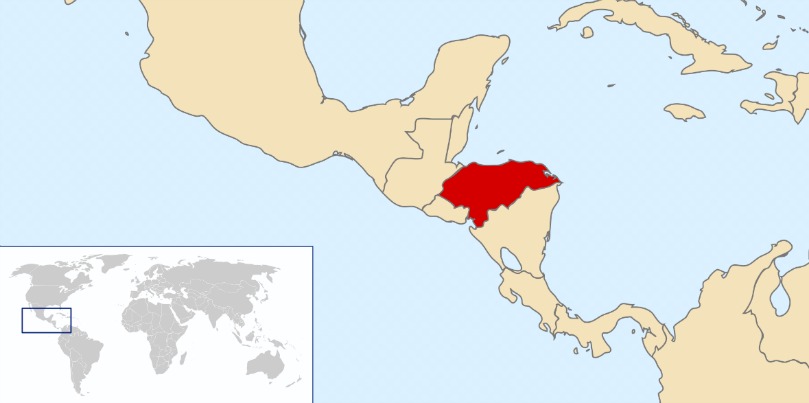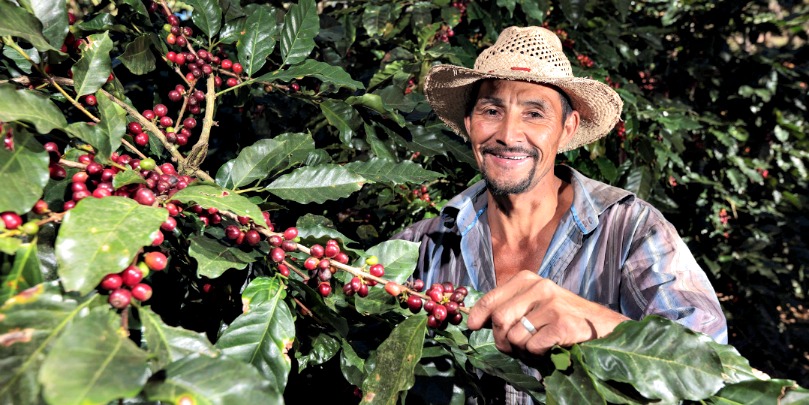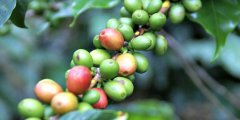Six major coffee producing areas of Central America and Honduras Litchi Orchid Coffee Flavor introduces how to make it good?
The origin and flavor of Honduran coffee made him shine in the coffee industry. Unlike Brazilian coffee, Colombian coffee and Costa Rican coffee in Central America, Honduran coffee is a rising star. So let's take a look at six different regions of Honduran coffee.
Copan is located in western Honduras and borders Guatemala, including parts of Copan, Oktopec and Santa Barbara. It ranges from 1000 to 1500 masl above sea level and has the widest range of humidity and temperature-although its lowest temperature is 11.5 °C, it may also be the coolest producing area in the country.
Here, you can find sweet coffee with rich chocolate, caramel and citrus flavors. The wine tends to be bold and creamy, while the finish is long and balanced with subtle acidity. Common varieties include bourbon, Kaddura and Katuai.

Copan
Copan's coffee is very famous in Honduras. More importantly it is part of the geographical indication of Western Honduras Coffee (HWC) which marks a significant origin (much like Mexican tequila or Rockford cheese).
Opalaka
Opalaca area is located to the east of Copan and is also a part of the origin of HWC. It includes most of Santa Barbara, Intibuka and Lompira. Common varieties here include bourbon, Catuai and iron pickup.
At an altitude of 1100L / 1500 masl, you will find very complex flavors: tropical fruits, grapes and berries; delicate acidity; and a well-balanced finish.
Montesilos is special because of its weather and high altitude. You will find that coffee grows between 1200 and 1600 masl and tends to be cold at night, giving cherries a chance to ripen more slowly and produce a sweeter taste.
Located on the border of El Salvador in southwestern Honduras, the coffee grown by the producers here has gained global recognition. This made Montesilos the site of the first original name of Honduras, Caf é de Marcala.
Komayagua
The Comayagua region is located in the heart of Honduras and consists of the states of Comayagua and Francis Camorasan. It has 1000-1500 MASL, and more importantly, altitude, according to IHCAFE, it has the largest production in the country in 2016, averaging 30.19 gallons of MANZANA per raw coffee (about 1.72100 mu).
It is also the area of this year's Project Origin Best of Honduras Washed champion: Finca Las Botijas's Jose Abel Gir ó n Dub ó n took part in the Pacamara with a score of 91.34 and sold for $29.10 per pound. The judges were impressed by its complexity, juicy, soft taste and fruity: they recorded candies, peaches, mangoes, flowers, jasmine, apricots, limes, honey, blackcurrants, oranges, watermelons, guava, hibiscus, raspberries, white grapes, red grapes and mint.
In a cup of Comayagua coffee, you can expect sweet citrus aromas, bright acidity and creamy body. Common varieties include Typica, Bourbon, Parchi and other hybrid varieties.
Er Paleso
You will find El Paraiso in southern Honduras, bordering Nicaragua. It has an altitude of 1000-1400 masl and a relatively high temperature of 16-22.5C.
The region's reputation is growing-thanks to this year's Excellence Cup champion. Oscar Daniel Ramirez Valerio's Parainema is planted in El Paraiso. It is farmed at 1400 masl and has the flavors and aromas of green apples, jasmine, peaches, blueberries, oranges and white wine.
More importantly, the Parainema is a rust-proof Sarchimor hybrid-which has historically kept professional buyers on guard. But Sasa gave them a reason, telling me, "hybrids smell great." He added that it was important to work with them correctly to maximize their potential.
Generally speaking, El Paraiso has a sweet, citric acid and smooth cup shape. Sasa told me that he also found unique flavors, including champagne, grapes, mangoes and tropical fruits, as well as floral acidity and creamy taste.

Agarta
Last but not least, we found Agalta. Located in the southeast of Honduras, it has a tropical climate and is between 1100 and 1400 masl above sea level. Common varieties include Bourbon, Caturra and Typica.
The coffee in this area offers a variety of tropical fruit flavors, with aromas of caramel and chocolate, delicate but obvious acidity and a sweet finish.
Masaguara
In front of the street, there is a litchi orchid from the producing area of Masaguara, Honduras. The taste of lychee, brandy and cream comes out gradually with the change of temperature. The taste is thick and the sweetness of honey will be very obvious.
Qianjie uses moderate baking, which is well balanced between sweet and sour.
Important Notice :
前街咖啡 FrontStreet Coffee has moved to new addredd:
FrontStreet Coffee Address: 315,Donghua East Road,GuangZhou
Tel:020 38364473
- Prev

Indonesian mantenin coffee bean type aged coffee bean production method can drink it? monsoon treatment
When most people hear Indonesian coffee, they first think of mantelin. But you know what? There are also many types of coffee beans. The mantnings on Front Street include gold mantnings, tiger mantnings, and aged mantnings. Let's introduce them to you one by one! Let's begin by introducing you to aged mantinin. He's usually translated as Old Sumatra.
- Next

Honduran coffee beans are the best grade to drink Honduran coffee beans. The influence of Geography on Coffee
Do you know what grade the best Honduran coffee is? How can you judge if you don't know? Then follow the front street to study! Because Honduras has both lowlands and mountainous terrain, its coffee is graded according to altitude. This is the same as Colombian coffee and Guatemalan coffee. Strict height growth: more than 4400 above sea level
Related
- Detailed explanation of Jadeite planting Land in Panamanian Jadeite Manor introduction to the grading system of Jadeite competitive bidding, Red bid, Green bid and Rose Summer
- Story of Coffee planting in Brenka region of Costa Rica Stonehenge Manor anaerobic heavy honey treatment of flavor mouth
- What's on the barrel of Blue Mountain Coffee beans?
- Can American coffee also pull flowers? How to use hot American style to pull out a good-looking pattern?
- Can you make a cold extract with coffee beans? What is the right proportion for cold-extracted coffee formula?
- Indonesian PWN Gold Mandrine Coffee Origin Features Flavor How to Chong? Mandolin coffee is American.
- A brief introduction to the flavor characteristics of Brazilian yellow bourbon coffee beans
- What is the effect of different water quality on the flavor of cold-extracted coffee? What kind of water is best for brewing coffee?
- Why do you think of Rose Summer whenever you mention Panamanian coffee?
- Introduction to the characteristics of authentic blue mountain coffee bean producing areas? What is the CIB Coffee Authority in Jamaica?

